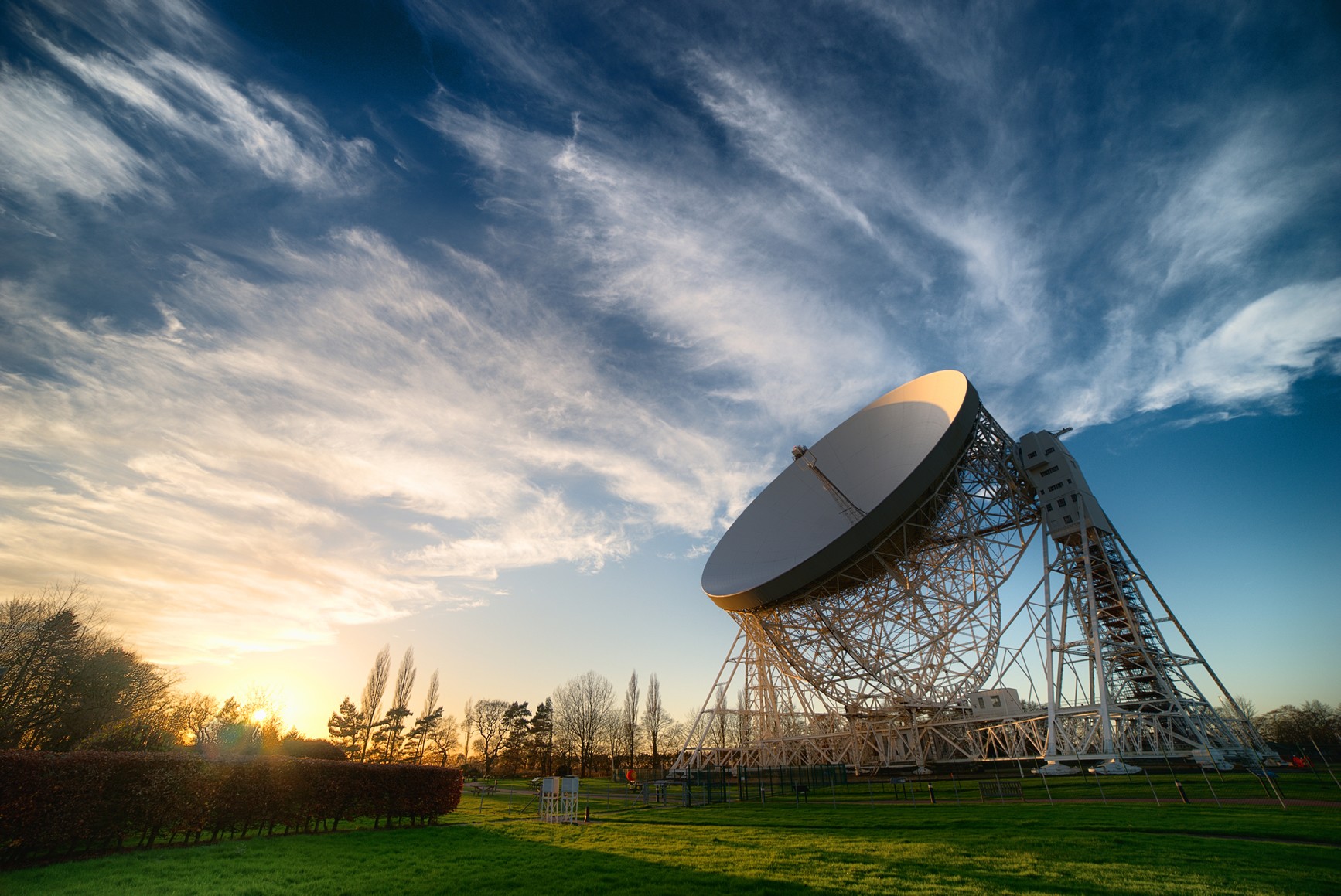First radio detection of Type Ia supernova explosion captured by e-MERLIN telescope at Jodrell Bank
After decades of trying, astronomers have found the origin of a Type Ia supernova explosion using radio emissions, thanks to the e-MERLIN telescope network based at Jodrell Bank, The University of Manchester.
A supernova is a powerful and luminous explosion and is the end of a star’s life. In the case of Type 1a supernovae, they can be used to measure distances in the Universe or for the study of dark energy.
Usually, Type Ia supernova occur when a white dwarf star collects material from another star within its orbit. Once the white dwarf eventually reaches its critical mass, it triggers a supernova explosion.
SN 2020eyj – a unique Type Ia supernova - was first detected on 7 March 2020, but the origin and nature of the progenitor system were unknown.
The unusual nature of the supernova was revealed by its abnormal light curve and infrared emission, narrow helium emission lines and, for the first time ever in a Type Ia supernova, also a radio counterpart.
Now, using the e-MERLIN telescope network, the first radio detection of a Type Ia supernova, confirms that the SN 2020eyj came from a binary star system composed of a white dwarf and a solar-type star.
The results were published in the journal Nature.
“The exquisite angular resolution of e-MERLIN combined with its high sensitivity enabled the radio emission to be pinpointed to the supernova, which is critical for establishing that the multi-wavelength emission was linked and attributed to the same source.”
Dr David Williams, e-MERLIN Operations Support Scientist at The University of Manchester, said: “Astronomers have been trying to detect radio emission from a Type Ia supernova for a few decades. Using e-MERLIN, the observatory staff were able to react quickly when we first heard of the potential interesting nature of this source from the authors of this study.
“The exquisite angular resolution of e-MERLIN combined with its high sensitivity enabled the radio emission to be pinpointed to the supernova, which is critical for establishing that the multi-wavelength emission was linked and attributed to the same source.”
Radio telescopes detect and amplify radio waves from space, turning them into signals that astronomers use to enhance understanding of the Universe.
e-MERLIN is one of the world's most powerful radio telescopes, created by linking seven individual large dishes across the UK (including the iconic Lovell Telescope) via a dedicated optical fibre network to a powerful correlator at Jodrell Bank Observatory. It is operated by the University of Manchester Jodrell Bank Centre for Astrophysics.
Supernova 2020eyj was discovered by the Zwicky Transient Facility camera on Palomar mountain in California, USA. The research was led by Erik Kool, researcher at the University of Stockholm, in collaboration with research institutes across the world.
Javier Moldón, a former e-MERLIN support scientist and researcher at the IAA-CSIC in Spain, who participated in the discovery, said: "This first radio detection of a Type Ia supernova is a milestone that has allowed us to demonstrate that the exploded white dwarf was accompanied by a normal, non-degenerate star before the explosion.
"In addition, with these observations, we can estimate the mass and geometry of the material surrounding the supernova, which allows us to better understand what the system was like before the explosion.
"Now that we have demonstrated that radio observations can provide direct and unique information to understand this type of supernova, a path is opened to study these systems with the new generation of radio instruments, such as the Square Kilometre Array Observatory in the future.”



